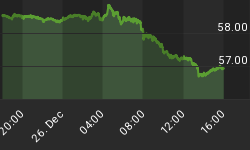IMF Warns Regulators to Brace For Global "Liquidity Shock"
Published 04-17-15
Unmarked charts courtesy of Zero Hedge

As it becomes public knowledge that the IMF has followed the BIS with a warning to brace for a global "liquidity shock", it has become apparent that banks are already taking quick action. It was a liquidity shock in the Asset Backed Commercial Paper (ABCP) market within the Shadow Banking system that caused the last financial crisis.
Depository Institutions Are Abruptly Locking Down Credit

Credit Application Rejections - Largest on Record

Only The Acronyms Have Changed Since The Last Crisis - The Bis & Imf Know This

The $72T global Shadow Banking System is built on the tenet of Borrowing Short and Lending Long. When the short term paper borrowing in ABCPs suddenly stopped in 2007 the credit markets panicked as counter-party risk took hold.
As Ambrose Evan-Pritchard reports in the UK Telegraph:
A third of all sovereign bonds in the eurozone now carry negative yields. This is causing havoc for money markets and for the life insurance industry, which has locked into commitments stretching out for thirty years that are becoming untenable.
"A prolonged low interest rate environment will pose severe challenges for a number of financial institutions. Weak European midsized life insurers face a high and rising risk of distress. The failure of one or more midsize insurers could trigger an industry-wide loss of confidence," it said.
"The industry has a portfolio of €4.4 trillion in assets in the EU, with high and rising interconnectedness with the wider financial system. A large mark-to-market shock could force life insurers into asset re-allocations and sales that could engulf the financial system," it said.
Commercial Lending Has Been Steadily Approaching Contraction

Global Credit Markets Have Been Shaky For Some Time!

Cracks in Credit Card Usage

Government Backed Student Loans (Sallie Mae) And Car Loans (Government Backed Motors - Ally) Kept Credit Alive

What The Banks Are Likely Worried About - Layoffs, Fed Tightening And A Potential Recession

We have previously talked extensively about the slowing global economy, the deterioration in top line revenue growth, reduced capital investment expenditures and slowing liquidity flows. They are all coming home to roost.
The March NACM Credit Managers Report outlines:
These readings are as low as they have been since the recession started and to see everything start to get back on track would take a substantial reversal at this stage. The data from the CMI is not the only place where this distress is showing up, but thus far, it may be the most profound.
The combined score is getting dangerously closer to the contraction zone and has not been this weak in many years (going back to 2010). It is sitting at 51.2 and that is down from the 53.2 noted last month.
The most drastic fall took place with the unfavorable factors that indicate the real distress in the credit market. It has tumbled from 50.5 to 48.5 and that is firmly in the contraction zone -- a place this index has not been since the days right after the recession formally ended. The signal this sends is that many companies are not nearly as healthy as it has been assumed and that there is considerably less resilience in the business sector than assumed.
Liquidity & Credit are Joined at The Hip
Credit only becomes Debt through the use of Collateral - WHICH IS NOW Created via Government Backing.
Consumer Credit Growth is NOW All Government Backed.


Potential Recession
START OF RECESSION SHOWN BY VERTICAL RED BAR - END OF A RECESSION BY VERTICAL GREEN BAR
THIS IS WHAT THE BANKS SEE

Investing Today Is Like Playing Russian Roulette
While Stocks are Ring You Feel You Must Stay & Play
- But You Know It is Not Going to End Well!!
















